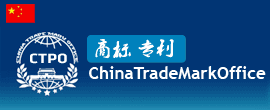Trademark Oppositions in China
In 2007, 707,948 trademarks were filed in China, which ranks China's Trademark Office (CTMO) among the busiest in the world. During the same period, 17,747 oppositions were filed. Evidently, with the large number of filings, it is increasingly important that foreign trademark holders both file their marks in China, along with constantly monitor other filings so as to protect their brands in the market. In this article, we set out the procedure and requirements to file an opposition in China. 1. Important Timelines and Procedures Article 30 of the Trademark Law states: Any person may, within three months from the date of the publication, file an opposition against the trademark that has, after examination, been preliminarily approved. If no opposition has been filed after the expiration of the time limit from the publication, the registration shall be approved, a certificate of trademark registration shall be issued and the trademark shall be published. Like virtually all trademark systems, China's CTMO publishes a Trademark Gazette with all preliminarily approved marks. A trademark holder will then have three months to file an Application for Trademark Opposition with CTMO, including evidence substantiating its request. From there, CTMO will then send a copy of the Application to the applicant, who will have 30 days to respond. Both parties will then have three months from the date of submission of the Application to provide supplementary evidence. Generally, CTMO will issue its decision through a notice within two to three years of the Application. Thereafter, either party may institute review proceedings with the Trademark Review and Adjudication Board (TRAB) within fifteen days. Subsequently, if a party is still dissatisfied with TRAB's decision, it can then file a suit against TRAB in the People's Court within thirty days of the review decision. 2. Legal Basis-company registration form There are numerous grounds for cancellation of marks: 1) Lack of distinctiveness (Art. 9, Trademark Law); 2) Identical or similar to name, national flag, national emblem, or other decorations of the People's Republic of China (Art. 10, Trademark Law); 3) Identical or similar to name, national flag, national emblem, or other decorations of foreign countries (Art. 10, Trademark Law); 4) Identical or similar to name, flag, emblem, or other decorations of international organizations (Art. 10, Trademark Law); 5) Identical or similar to official signs, demonstrating official control or warranty (Art. 10, Trademark Law);-online company registration 6) Identical or similar to the symbols or names of the Red Cross or Red Crescent (Art. 10, Trademark Law); 7) Discriminatory against nationality (Art. 10, Trademark Law); 8) Exaggeration or fraud (Art. 10, Trademark Law); 9) Detrimental to socialist morals or customs, or having other unhealthy influences (Art. 10, Trademark Law);-Trademark registration procedure 10) Directly referencing quality, main raw materials, function, use, weight, quantity, or other features of the goods (Art. 11, Trademark Law); 11) 3-D marks whose shape is derived from the goods itself, required for technical effect or obtaining substantive value (Art. 12, Trademark Law); 12) Geographic indications for goods which are not, in fat, from the region indicated (Art. 16, Trademark Law); 13) An agent or representative registers, in its own name, the trademark for whom he acts as agent or representative, without authorization (Art. 15, Trademark Law); 14) The mark, registered in the same or similar class of goods, is a reproduction, imitation, or translation of another person's trademark not registered in China and is likely to cause confusion (Art. 13, Trademark Law); and 15) The mark, registered in non-identical or dissimilar class of goods, is a reproduction, imitation, or translation of another person's well-known trademark registered in China, misleads the public and is likely to harm the interests of the holder (Art. 13, Trademark Law). 3. Conclusion Again, any interested party will have three months from the date of publication to file an Application for Opposition. Should the deadline pass, the trademark will be granted, and the only available remedy would then be an application for cancellation of the mark. Though the grounds are the same, procedures are somewhat protracted and, obviously, the holder will now enjoy the rights of the granted mark during the period of grant and cancellation. As a result, it is extremely important to constantly monitor and quickly react in order to protect trademark rights in China. Gregory Sy is an Of Counsel at Grandall Legal Group, a law firm in China. Mr. Sy is a corporate/commercial lawyer with a specialization in working with foreign companies in their investments into and concerning China. Gregory is involved in all aspects of their investment, from tax planning, corporate structuring, IP protection, due diligence, partner selection/negotiation, site purchase/lease, employment, and dispute resolution (excluding litigtion). Representative clients include the Consulate of the United States of America in Shenyang, the Embassy of Brazil, Bancomext, various publicly-listed companies (NYSE, LSE (AIM), DAX, BSE), along with numerous other SME's operating in a wide range of industries.
|

